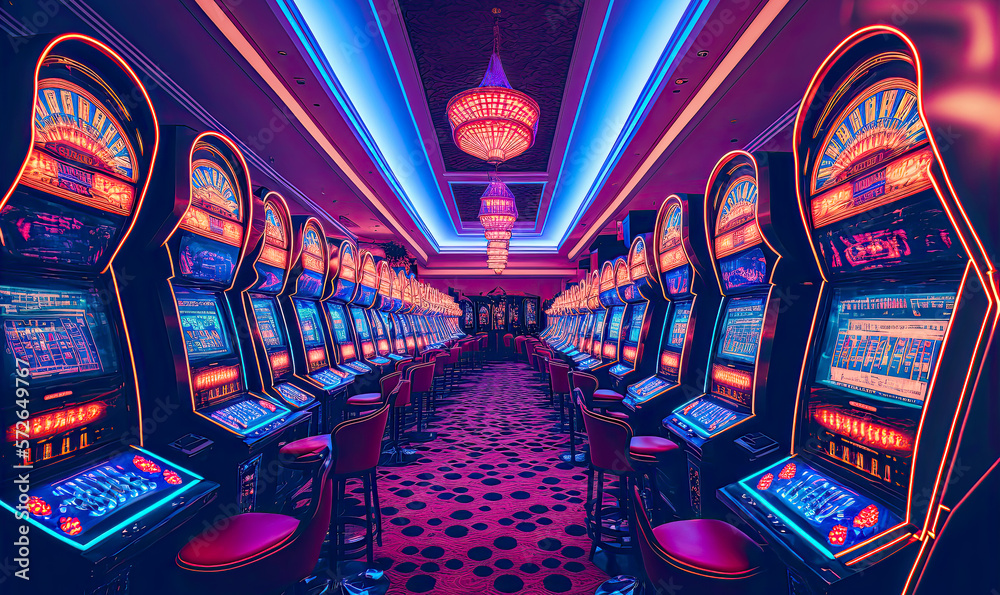The tale of gaming machines is a fascinating narrative that mirrors the evolution of amusement and wagering across the generations. From their simple origins in the 1890s to turning into a mainstay in casinos across the globe, these chance games have undergone notable transformations. Casino slots games have mesmerized players with their bright designs, engaging storylines, and the potential of life-changing prizes.
At first created as mechanical devices with spinning cylinders and a small number of symbols, slot machines have evolved into sophisticated tech-based games that incorporate innovative features and interactive elements. Today, they draw in millions of players, each aspiring to win big with just the pull of a lever or the press of a button. Exploring the captivating past of these machines unveils not just the tale of a popular activity, but also a reflection of social evolution and technological advancements over the years.
One of the Origins of Slot Machines’ History
A tale of slot machines begins in the final years of the 19th century, a time when mechanical devices were increasingly popular in entertainment venues. The first true slot machine came into existence by Charles Fey in 1895, known as the Liberty Bell. This machine featured three spinning reels and five symbols: hearts, diamonds, spades, a horseshoe, and the famous Liberty Bell. Players pulled a lever to spin the reels, and if the symbols aligned in a specific combination, players won a payout. Fey’s invention quickly captured the attention of gamblers and set the foundation for future developments in casino slots games. Zbet

As the idea of the slot machine gained popularity, numerous inventors sought to improve upon Fey’s design. By the early 1900s, slot machines were becoming a common sight in saloons and amusement parks. In 1907, the initial electromechanical slot machine was created by Herbert Mills, which featured a more intricate system of payout mechanisms and the renowned fruit symbols that are still associated with slots today. This evolution marked a significant shift in the gaming industry, as machines became more entertaining and user-friendly, drawing in more players.
The popularity of slot machines continued to soar throughout the first half of the 20th century, leading to their extensive use in casinos across the United States. However, the rise of legal restrictions on gambling during the Great Depression posed challenges for the industry. Many machines were outlawed, but this did not stop innovators. Instead, they adjusted by creating machines that gave out candy or gum instead of cash prizes, effectively bypassing the restrictions while still providing the thrill of a casino slots game. This ingenuity kept the spirit of gambling alive, setting the stage for the future resurgence of slot machines in modern casinos.
Evolution of Gambling Machine Innovation
The story of slot machines began in the final 19th century with the creation of the initial mechanical machines. Charles Fey, a San Francisco craftsman, introduced the first slot machine in 1895, which included three spinning reels and five images: heart shapes, diamonds, spades, a horseshoe, and the Liberty Bell itself. This basic yet engaging design laid the basis for the future of casino slots game, creating an immediate appeal for players looking for fun and a opportunity to win.
As technology progressed, so did the design and capabilities of slot machines. By the middle 20th century, electronic mechanical machines emerged, incorporating electronic elements to improve gameplay and amplify payout possibilities. These improvements permitted for greater complexity features like multiple paylines and larger jackpots. The gambling venues welcomed these innovations, causing the emergence of slot machines as a major contributor of revenue within the gaming industry, fundamentally transforming the casino slots game experience.
The late 20th and beginning 21st eras heralded the age of digital technology, causing the launch of video slots. These gaming units replaced traditional reels with monitors, permitting even more imagination in themes and gameplay features. Gamblers could now experience rich graphics and sound effects, along with interactive bonus rounds. The shift to web-based gaming further transformed the casino slots game, making slots available to a global market anytime and wherever, thus marking a new era in the progression of gaming machine advancements.
A Social Influence of Slot Machines
Slot machines have become not only a form of entertainment; they have woven themselves into the essence of popular culture. Across movies and TV series to music and literature, these famous gaming machines often act as emblems of chance and gambling. Films like The Casino and Ocean’s 11 notably highlight slots, depicting them as exciting yet unpredictable elements of the gambling experience. Their distinct attraction lies in the sound of coins falling, the spinning reels, and the bright blinking lights, which in unison create an electric atmosphere that captures attention.
In addition, slot machines have shaped social gatherings and events, making them a centerpiece in casinos and gaming venues. Many people do not just visit a casino to gamble; they go for the entire experience, which encompasses the social interactions and the lively ambiance surrounding these machines. Special contests and themed gaming nights centered around these games also showcase their popularity, fostering social connections and collective fun among players. This community aspect has contributed to the machines’ enduring popularity.
The advancement of technology has further changed this cultural impact. Digital and online slots have expanded access to these games well beyond the walls of physical casinos. Players can now enjoy their favorite casino slots game from home or on the move, leading to the rise of virtual forums and forums where enthusiasts exchange strategies and experiences. The ongoing innovation in game design and the integration of storytelling have kept the cultural importance of slot machines alive, attracting younger audiences while maintaining a tie to their cultural roots.
